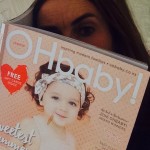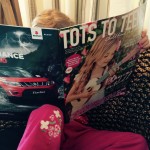My big girl is thirteen, she’s just started high school. And she is one of very, very few children whose parents have not put a cellphone into her hands.
I’m hearing of subtle and insidious ways that the staff’s behaviour (interval/morning tea time is announced with “OK, phone time!”) and policies (“take a photo of the school notice with your phones”, “we will text you if there’s a change”) seem to blindly assume that more tech is better.
I’ve yet to find a representation of an opposing view, questioning or critical thinking. I have not seen evidence of an awareness for the need for a balanced approach. There have yet to be conversations about responsible use of the tool, or the risks associated with it.
Risks, you say? Ummm … yup.
Let’s review a handful of studies dealing with cell phones and adolescents, shall we?
Intensive cell phone use was associated with female sex, rural school location, good family economy, smoking tobacco, excessive alcohol consumption, depression, cell phone dependence, and school failure. More health education is needed to promote correct and effective cell phone use among adolescents. Factors associated with intensive use and dependence should be considered for possible intervention activities.
With apologies for the random and non-APA status of my references, a citation for that is here: Mercedes Sánchez-Martínez and Angel Otero. CyberPsychology & Behavior. April 2009, 12(2): 131-137. doi:10.1089/cpb.2008.0164.
Or check this out, from the journal of BMC Public Health, in 2011:
High frequency of mobile phone use at baseline was a risk factor for mental health outcomes at 1-year follow-up among the young adults. The risk for reporting mental health symptoms at follow-up was greatest among those who had perceived accessibility via mobile phones to be stressful. Public health prevention strategies focusing on attitudes could include information and advice, helping young adults to set limits for their own and others’ accessibility.
Here are some findings from another paper dealing with the mental health issues:
Measured cell phone use (CPUse) to include the device’s complete range of functions.
CPUse was negatively related to students’ actual Grade Point Average (GPA).
CPUse was positively related to anxiety (as measured by Beck’s Anxiety Inventory).
GPA was positively and anxiety was negatively related to Satisfaction with Life (SWL).
Path analysis showed CPUse is related to SWL as mediated by GPA and anxiety.
You can find that here: Computers in Human Behavior Volume 31, February 2014, Pages 343–350
There are risks to the mental health of our children. That’s not all:
There are many academic papers dealing with the development of scales to measure cell phone addiction in adolescents, (because this is a universal problem!) (eg: Journal of Korean Academy of Nursing . Dec2009, Vol. 39 Issue 6, p818-828). We don’t even know the longterm effects on our eyesight, posture, and fine motor functioning. There is some evidence to suggest there are negative impacts on our reproductive health (and to be clear: I really want grandchildren some day!)
This is a bit like our attitude to tobacco a century ago! Everybody’s doing it, let’s hope for the best!!
School is where our kids are supposed to become smarter, and yet the use of smartphones has been proven to dumb us down; OBSERVE:
Lower analytic thinking associates with increased Smartphone use.
Results suggest that people offload thinking to the device.
Supports conceptualization of Smartphone use as a type of cognitive miserliness.
That’s from the journal Computers in Human Behavior, Volume 48, July 2015, Pages 473–480, a paper called The brain in your pocket: Evidence that Smartphones are used to supplant thinking.
More dumbing down happens with excessive use of social media:
There was significant relationship between Facebook use and anxiety, while cell phone owners perceived themselves as more outgoing, cheerful, and sensitive. A significant proportion of teenagers indicated that their cell phone was inextricably wrapped with their identity and even their sense of self-worth. Results from the survey suggested a statistically significant, negative relationship between Facebook activity and math grades of the respondents.
That’s from a paper called: Facebook Use and Texting Among African American and Hispanic Teenagers. An Implication for Academic Performance It was written by E. Bun Lee and published in 2014.
This paper (Adolescent in-school cellphone habits: A census of rules, survey of their effectiveness, and fertility implications, it’s from the journal called Reproductive Toxicology, Volume 32, Issue 3, November 2011, Pages 354–359) looked at school policies, check out their recommendation at the end:
All schools banned private use of cellphones in class. However, 43% of student participants admitted breaking this rule. A high-exposure group of risk-takers was identified for whom prohibited in-school use was positively associated with high texting rates, carrying the phone switched-on >10 h/day, and in-pocket use.
The fertility literature is inconclusive, but increasingly points towards significant time- and dose-dependent deleterious effects from cellphone exposure on sperm. Genotoxic effects have been demonstrated from ‘non-thermal’ exposures, but not consistently.
There is sufficient evidence and expert opinion to warrant an enforced school policy removing cellphones from students during the day.
We clearly need debate, discussion, calm heads and reasonable policies that have been designed by adults (those of us with the fully formed cortexes) to protect children.
This is lunacy. A device that is associated with a host of negative health outcomes is having its use encouraged without question.
Kids: it’s morning tea time. Get your tobacco out. Have at it.



